Have you ever noticed those last stubborn 5lbs you might want to skim, can be the peskiest to drop? The same can be for a personal record in your sports performance. Sometimes, the longer you are in a sport or the more elite you are, the more difficult personal records can become.
A thirteen-minute personal record when you’re already a double-digit Ironman® World Championship Qualifier can seem just as daunting. The process becomes more strategic than ever before, looking at the minutiae details and the overall strategy simultaneously.
As you can guess, these advances don’t come without tremendous dedication. We stated in a recent Athlete Case-Study for Boston Qualification that the “long game” can play to your benefit, and this race report is no different.
To fully appreciate the victory of a thirteen-minute personal record, you need to know the build up. Now, because Patrick McCrann is a long time veteran of the sport of triathlon, 30-time Ironman® finisher and 10 times Kona Qualifier, we won’t go all the way to the beginning. Let’s start with his recent stretch of build up.
2017:
- Mt Tremblant – A Come Back From Injury Story
- 2017 Ironman® World Championship Race Report
- Late Season Qualifying – Los Cabos Race Report
- Los Cabos – Back to Back to Back Race Strategy
2018:
- 2018 Ironman® World Championship Breakdown and Kona Personal Record
- And that leads us to Ironman® Cozumel 2018 Race Report and an overall Personal Record Story……
Short Version
- New personal IM best of 9:23 on a flat, hot and windy course.
- A fitting end to a long season of solid training and great fitness.
- Time for well-deserved rest!
Long Version…You Asked For It
Having had some success in 2017 with a late-season race (read about it here), the idea of taking my Kona “build up and race” fitness somewhere else was always in the back of my mind. Unfortunately, my best Ironman friend ever told me he wasn’t going to race. So this was going to have been a solo sojourn. Still Mexico. Still hot. Still windy. Still, hopefully, Bueno.
Transitioning Post Kona
Unlike 2017, I actually raced the marathon in Kona this year. Perfect swim and bike conditions combined with personal best bike fitness enabled me to dial in a great race.
But Cozumel was looming, so I was all in on my prep:
- Rested hard for five straight days.
- Got back on the Ventum, on Zwift, and started spinning the legs out – 30 minutes on Day 1. 60 minutes on Day 2, 2.5 hours on Day 3 — this helps with reverse losing fitness.
- I shut the run down for two weeks protecting the run legs.
- In addition to committing to actually swimming my longer swims in the pool and keep the interval/strength workouts to 30 minutes on my Vasa Swim Ergometer
A Bit More on the Bike
I had more time until Cozumel 2018 than I had for Cabo 2017 — two more weeks for a total of six — so I set out to continue pushing my bike fitness a bit higher. Given the improvements I made to my FTP before Kona 2018, I decided to focus on efforts that would “prove” I could, in fact, ride the 20′ number I had generated in my test.
This meant doing 30′ and 45′ and eventually 60′ intervals as descending percentages of that high number. Along the way, I did quite a few upper steady rides (think just harder than IM pace) in Zwift. I made it through the 30′ session with flying colors but crashed and burned on the 45′ one. Seriously…a 45-minute interval?? I was clearly tired, so I decided to keep things super steady (for endurance) and short and fast (Zwift races) in the meantime. The data suggested I was moving my actual FTP closer to my “earned” one…but that fatigue was real and I didn’t want to push too hard.
Indoor Running For The Win
I dusted off my trusty (old) treadmill that doesn’t go faster than 7:30 minute miles. I broke out the space heater, set it next to the treadmill at 90 degrees and started running.
Most of my runs were in the 30-minute range, with a 6- and 10-miler for finishing purposes.
But it’s critical for maintaining my heat acclimation, at least mentally. Studies do suggest that heat acclimation from a sauna can be effective within two weeks of an event…so in my last week (slacker!) I ran daily at the local YMCA for 30 minutes then jumped in a 150-degree sauna for 30 minutes.
Getting to Cozumel
My teammates suggested that flying direct into Cozumel was a gazillion time better than flying to Cancun and taking a bus to a ferry to a taxi to your hotel. So I left Friday at 4 am for a 7 am flight, landing at 2 pm with the expo closing at 6 pm.
I got a quick cab to my lodging — El Villas Encanto — and then ventured out for another four mile run on the course– then over to the expo. I was registered and out the door in 10 minutes. I grabbed a small dinner, hit the MEGA grocery store and then it was back to the B&B to build my bike. I would only have one chance to ride it (on my way to drop it off at T1 on Saturday AM)…so I had to get it right.
Saturday was up early for a big waffle breakfast, then ride down to T1. I had a tailwind for the 23-minute ride, so I did turn around briefly to see what the headwind would feel like…not pretty, as expected. I dropped the bike, explored the transition area while dropping my T1 bag and then it was a bus ride back to the hotel. Done early…until I realized that I left my computer, turned on, on my bike. Another bus ride down and back…and it was time for lunch and dropping my T2 bag (Separate transitions). Only then could I put my feet up for the rest of the day.
Sunday Morning
With a 7:30am start, and buses to T1 not starting until 5:30, it was a relatively late IM start. I enjoyed the sleep…and then hustled to the bus. Note to those of you considering the race, be AT the hotel EXACTLY at 5:30am…I was there at 5:40 and got on the second – and last – bus. Yikes!
T1 was pretty quick, just setting things up on the bike. Hit the port-a-let to avoid later lines and then took the shuttle back to the swim start (did I mention two transitions). By the time I got there, it was 6:50 and there wasn’t much time to get ready and get in the chute!
The Swim: 1h 2m
Basically, you walked out onto a pier and then jumped to your left and then swam along the shore “down” to T-1. Conditions had been super windy all week and as such the swim was REALLY close to shore. This meant fighting a wave “break” and lots of kelp floating in the water.
I tried to focus on a high cadence in my swim stroke but found myself struggling with the waves which (moving right to left) and the swells from the wind which were originating directly behind from behind me (moving front to back).
There were times of the swim when we were just flying and other times when we were moving very slowly. You can see this via the green “pace line” above. Started fast….middle slow…finish fast.
I still have trouble asserting my swim stroke in the water with ocean-like conditions, but I was sufficiently happy with how it played out. I never got tired and honestly thought the swim was faster than the clock said. I guess time flew by while I was floating!

The Bike: 4h 53m
I could tell from the transition area that several bikes were gone but it wasn’t as many as I had feared. I made quick work of mounting the bike and getting right down to business.
The course is 2.75 loops of the island, as we end up at a different place for T2. Tailwind down the western side of the island, headwind up the eastern side, with heat building all day.
Given my success with Kona, I concocted the same basic plan: ride hard until the heat starts to build (to a specific mile mark, with a Training Stress Score (TSS) target), and then dial it back to stay fast without increasing heart rate or unnecessary fatigue.
My plan was to hold 265 W (about 73% of my FTP) for the first 64 miles..about 150 TSS. At that point, I would dial things back to 245 W with the last 8 miles a bit easier if I felt like it. Total TSS would be about 245.
It took me about 15 to 20 minutes to kind of get settled in with all of my gear and to feel my bike legs come around. By that point in time, we were already turning the southernmost point of the island towards the headwind! I took advantage of a slight descent to pee. Hydration, check!!
While the wind was tough coming at us from about 1 o’clock on the dial, it wasn’t terrible. The terrain was rolling enough that there were a few breaks in the wind. But it was legit and I knew it was only going to get more chaotic with more people. I did my best to stay aero and get to the first loop pretty quickly.
All told the first loop took me about an hour and 40 minutes so I knew I was right on schedule in terms of time. I enjoyed the tailwind section and continued to push through the building headwind on the second lap. I was already dreading that third time around!
As I started the third lap, I finally caught up to athletes who were going roughly in my speed and begin to engage with me in the typical back-and-forth fashion that I consider typical Ironman bike racing. They were a strong group though, and my back began to complain forcing me to sit up and stretch for a while. Eventually, I had to make the decision to let them go because it was long past time for me to dial my effort down a little bit.
The goal was to drop to 245 W to avoid accumulating too much heat. That seemed like an oxymoron since the winds were so strong that it didn’t feel that hot at all. But flipping through the screens on my Garmin 810 I could see that the road temperature was pegged at about 91° — time to be smart and really focus on staying wet and hydrated.
Strangely enough, it was about the last 45 minutes that I finally found myself dialing in a very efficient and effective aero position on the bike. I had slammed myself really far forward on the nose of my saddle and was tucked perfectly and was still able to hit 23 miles an hour at the lower watts. Something for me to plan next time for sure.
It’s worth mentioning that the second and third labs were definitely more crowded with other racers who were in different parts of their day. Some people were really struggling and the winds and from the heat; you could see it in their body language. Do not do this race without an excellent fueling plan and aero position!
I had to be careful to not run into anyone who was swerving due to the winds. Coming into transition, I was looking forward to the run although I was really annoyed by a guy who’d been drafting right on my wheel for the last 10 miles.
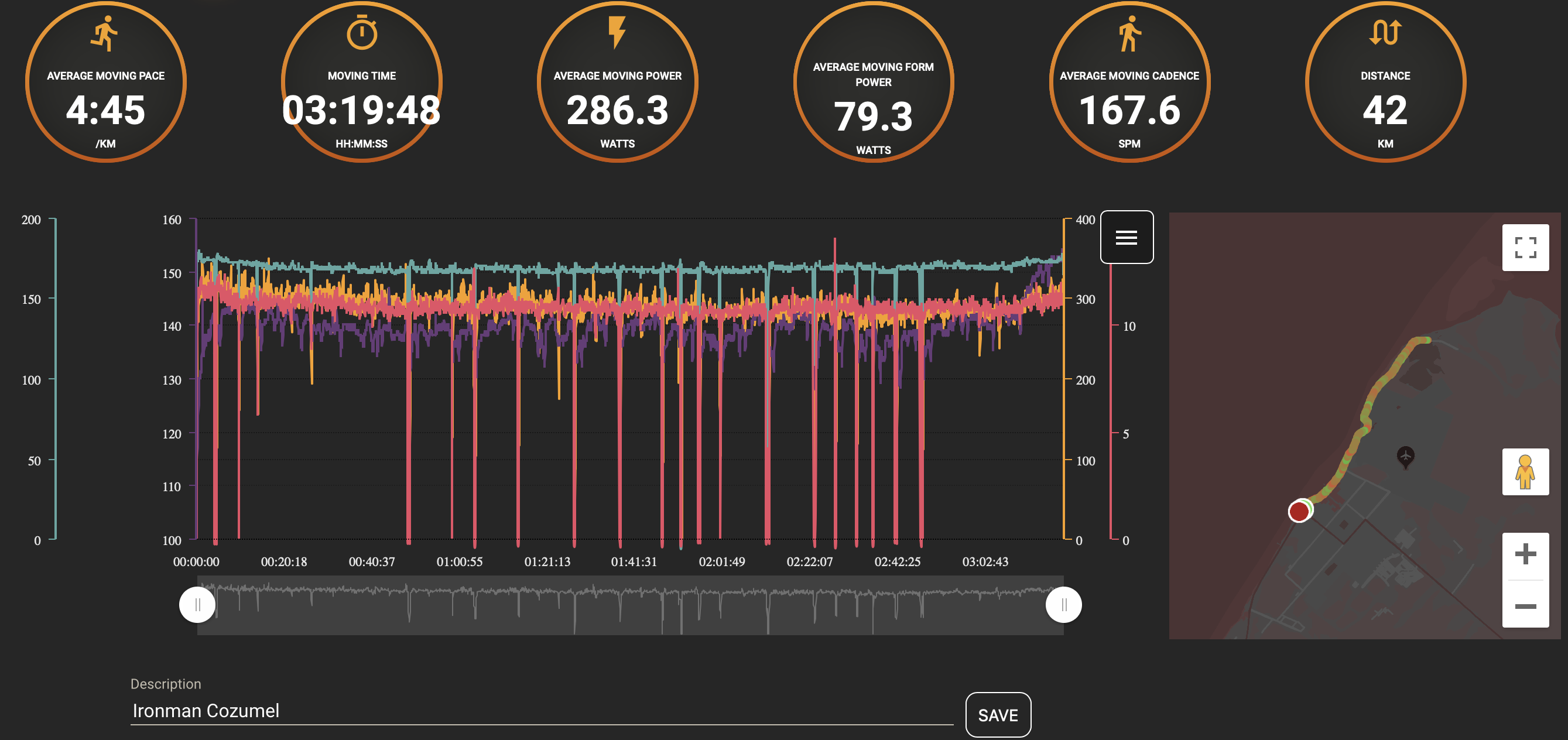
The Run
After my usual pit stop in transition for a quick hydration check, it was off to run. I had been doing all of my training indoors with the space heater on me and the treadmill set at about 7 1/2 minute miles. That’s not a particularly hard pace for me but it’s pretty consistent with what I run on race day when I feel good, so I left it there.
The Cozumel Run Course is three loops; a direct out and back. Outbound you run into the wind and then on the return trip you have a tailwind, making you much hotter.
As I took off on the run I could tell that it was very sparsely populated on the course and I felt pretty good about my position. Early on I had another racer asking if I wanted to work together in the wind, but I told him it was too early to determine whether or not we actually would be suited for one another. I saw him later on the side of the road with a cramp so I think I made the right call to run my own race.
For the geeks out there, I used my Garmin watch, dialed into my Stryd running power meter to make sure that I was around 320 W. If I was there, I knew my heart rate would be right between 140 and 145 bpm.
Heading down towards the first turnaround I could see the other athletes coming back to me and it was clear that there were quite a few solid Age Groupers mixing it up with the pro-men who were already an hour ahead of us.
It’s hard to tell how where you stand in the race sometimes, but I had a good sense that there were two or three people in front of me at the point. In Cozumel, they write your AG category as a letter on your calf, but it’s not compulsory. So it’s quite hard to tell who was in your age group.
I decided to stay internally focused, with my mission being to run through as many of the stations that I possibly could. This is a big change from in the past when I would stop at everyone to get what I needed. In Cozumel, the aid stations are just 1 km apart which is manageable when you are in the heat and feeling the effects of the race. Not sure if I can do it at a North America race with mile-long gaps between the stations!
Through the first lap, I felt really strong, and my numbers show that. I was using a field on my watch for the last lap pace and my goal was to keep it between 730 and 745 minutes per mile for as long as possible. With the exception of a few miles towards the end, I was right on point!
Just like the bike, the last two laps of the run began to get very crowded. It became increasingly harder to run through aid stations efficiently and to keep my momentum. I resorted to eating quite a few bananas because my hands were starting to feel the effects of dehydration.
As I started the third and final lap, I was at about mile 18 which we refer to as “The Line.” To prepare for this final 8 miles I quickly took some extra salt and slammed a few tiny cups of soda. Then it was time to get to work.
I knew this is where the race really happens and I had to be sure not to make any errors here. The plan was to identify where on the return trip I could pick up the pace. On the way out I was able to identify what I thought was the highest point of elevation. I was going to use that as my mental mark to pick things up.
As I ran out to the turnaround again for the final time I grabbed a couple of cups of ice, loaded up and got to work. About three or four minutes in, someone from a different AG passed me and he was moving quite well. I did my best to stay with him even though he was pulling away. Thanks to pushing myself to follow him, I saw someone else who actually was in my AG.
I saw him at about mile 24 and closed the gap down over the last mile. With the 25-mile marker in view, I decided to pick things up and push for it. Without anyone on-site to tell me my place, I had no choice but to push for the finish in the event that he had started with or behind me in the time trial swim start.
I shot past him at the 25-mile mark thinking to myself “it’s just one mile, you got this!” Little did I know that mile would last for an eternity and I nearly blacked out just before the finish line. Thankfully I put two full minutes on him in the last mile and change. Turns out he had also started the swim three minutes behind me.
Post Race
My finish time was a 9:23, which allowed me to lock in fourth place in my AG and 38th overall with my third-best Ironman marathon time ever (3:20!). Very pleased to see that I only slowed 20 seconds per mile over the second half of the marathon. I had a feeling there would be four slots in the M40-44 AG, and there were actually FIVE because the M75-79 athlete didn’t make the swim cut off…and we received that slot as the biggest AG.
It was super exciting to be up on the podium again for my AG, and even more thrilling to have my name called for a Kona slot. This makes my tenth trip to Kona, which is just unbelievable. In many ways this past year was one of my best training years yet. I was smart to curb the run, ramp up the bike with some training camps and have a ton of fun.
While playing the “long-game” might not be as exciting as full force ahead, the strategy creates a healthy athlete, an overall well-rounded athlete and most importantly, an athlete that can build a lifetime in endurance sports rather than a frustrated burnout. And bonus, it creates spectacular results!
Team Endurance Nation has a jam-packed 2019 season. From preparing for our Key Races at Eagleman, Lake Placid, Chattanooga, and Kona to the ultrarunning madness that is sweeping our team and all the other new events we support online here so much awesomeness happening.
Imagine what you could accomplish with this mentality? We would love to be apart of the journey.
And remember, dreams combined with dedication is a power combination!
Sign Up for 30 Days of FREE Coaching!

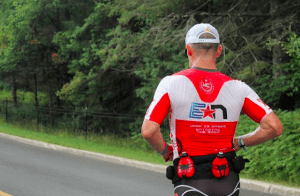
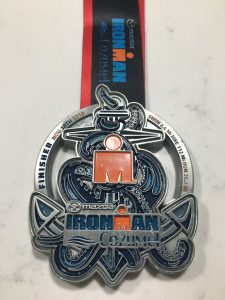
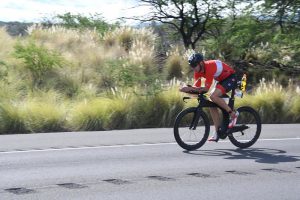
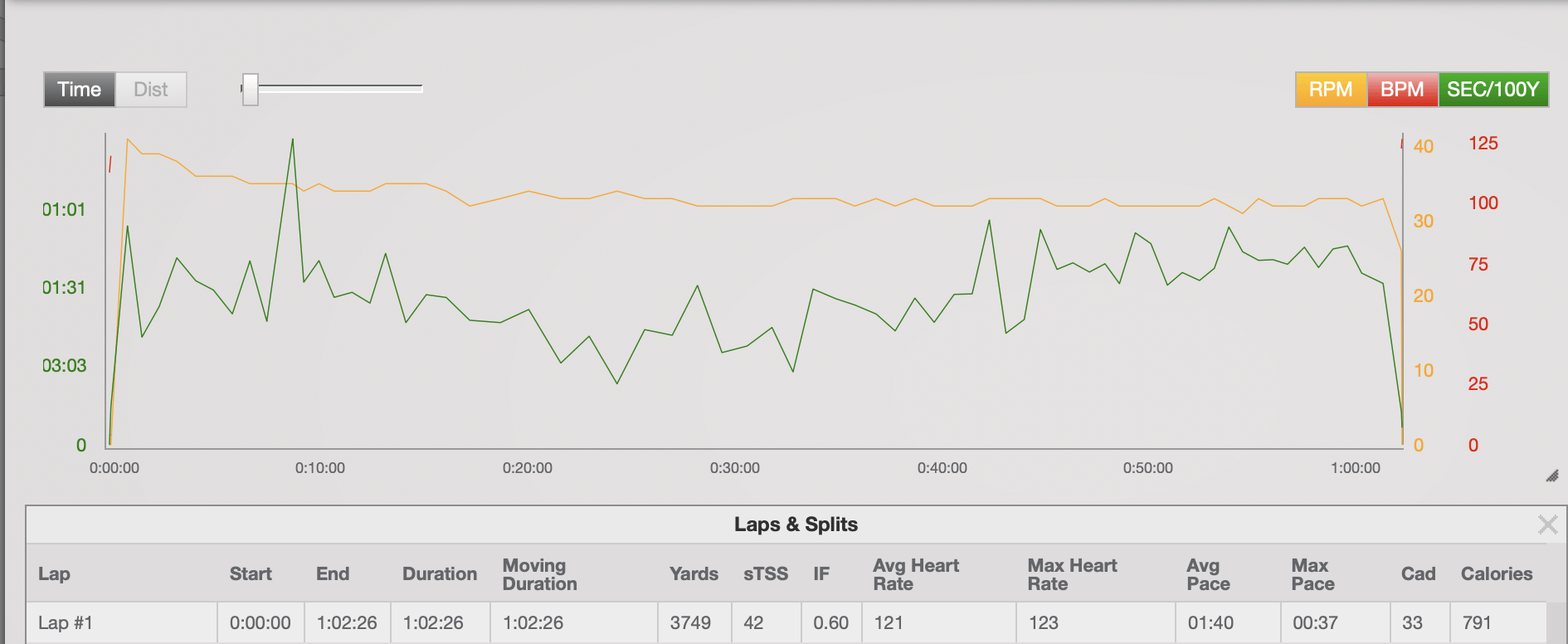
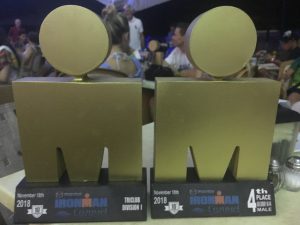
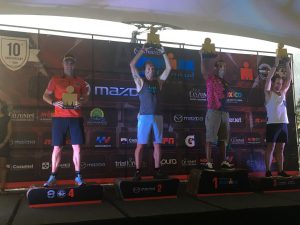


Leave a Reply